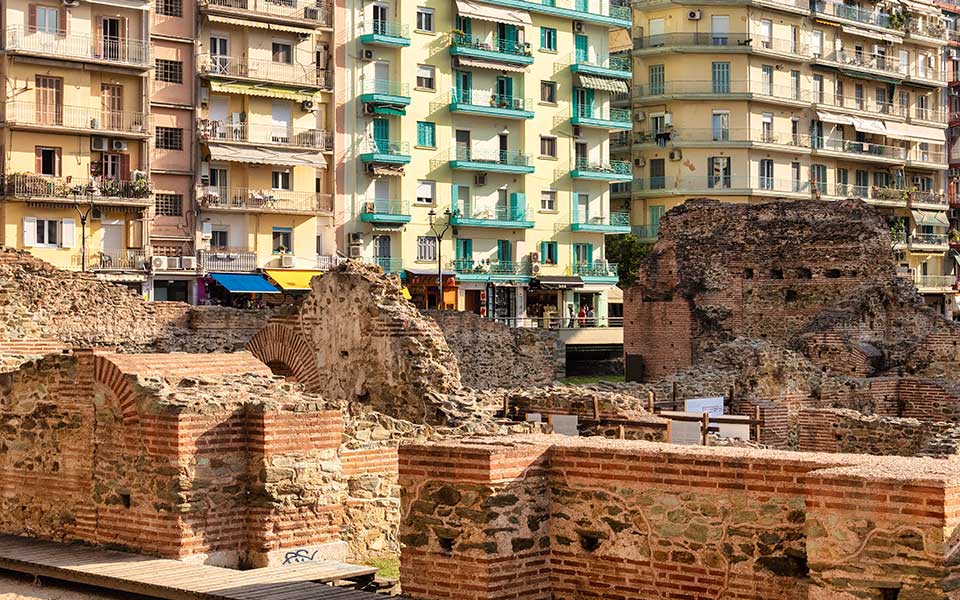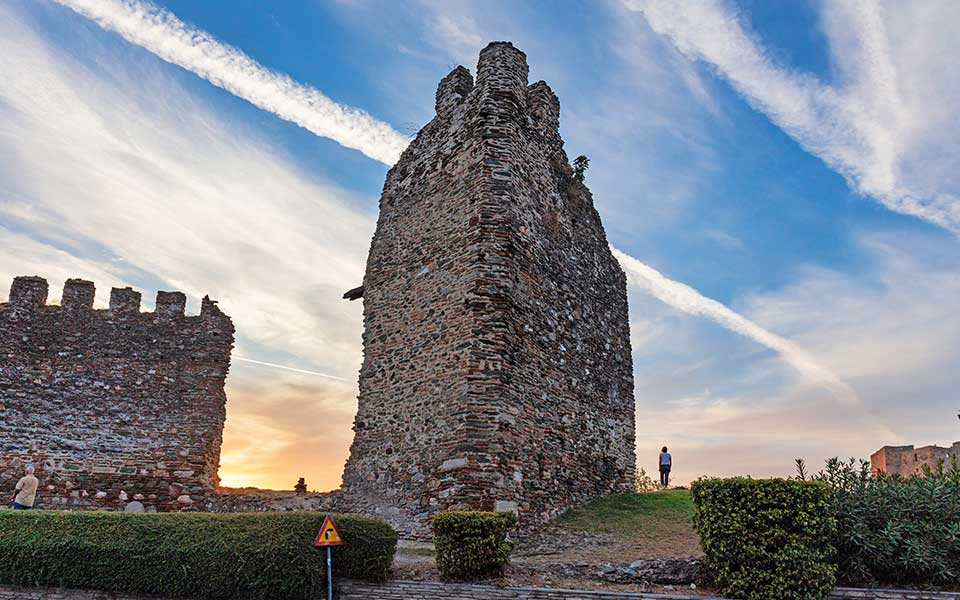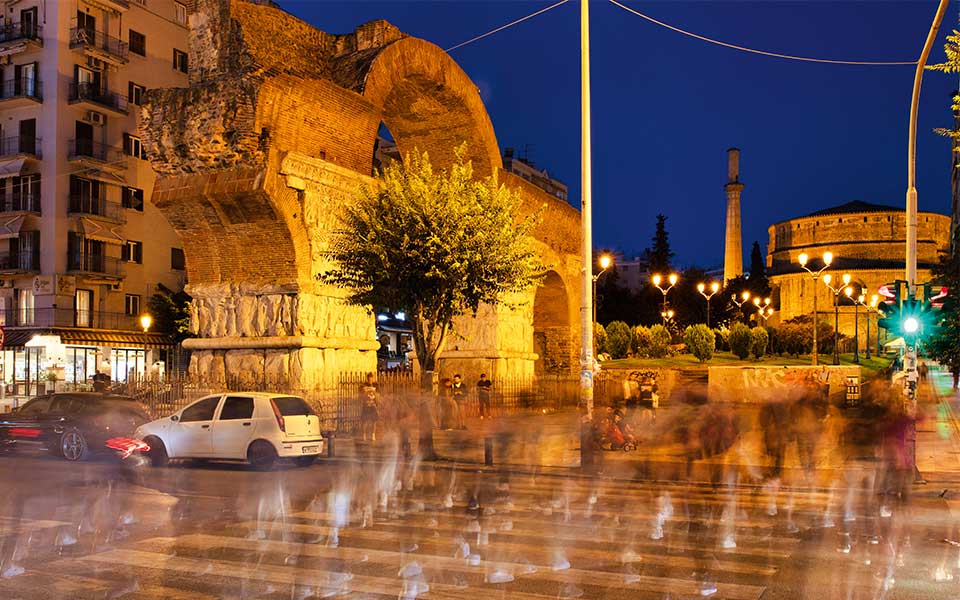
Outdoor Museum: Galerius Palace
In certain parts of the city center, it feels as if one is witnessing a dynamic balancing act between modern urban use and historical preservation. This is what it is like to visit the remains of Emperor Galerius’ palace. Today, around these Roman-era ruins beats the heart of Thessaloniki’s youth scene. Students from the nearby Aristotle University campus take breaks in the surrounding cafés, enjoying the contrasts this old-yet-new city has to offer.

Alternative Acropolis: Eptapyrgio
Recently, more and more people have been discovering the Upper Town’s highest point, to learn about its history over the centuries. This is Eptapyrgio, the Byzantine fortress also known as Yedi Kule, which has been transformed into a museum and cultural space. In addition to hosting concerts, it attracts many residents and visitors who make the ascent to enjoy the panoramic views from this stunning site.

Meeting Point: Kamara
Every day, the youth of Thessaloniki and visitors to the city gather at Kamara. The Arch of Galerius, as it is more properly called, forms part of the Galerian Palace complex along with the nearby Rotunda, a structure reminiscent of Rome's Pantheon. The ancient Via Egnatia, which connected Thessaloniki with the Adriatic Sea and Constantinople, ran directly under this arch, as did trams in the early 20th century. Today, the pedestrian crossing at the Kamara traffic lights is one of the busiest in the city, used by hundreds of people at a time
to reach the other side of Egnatia Street.









